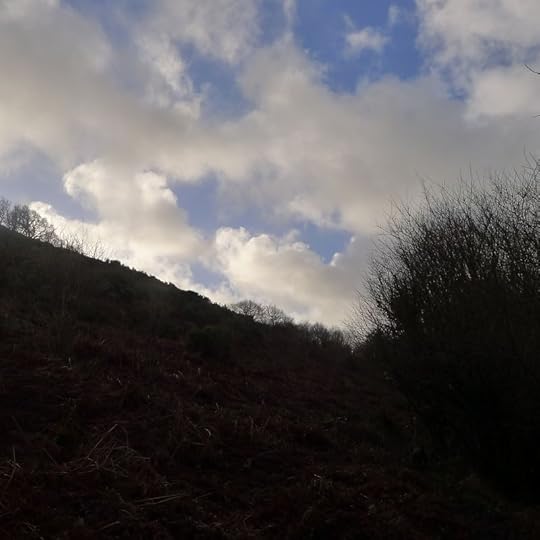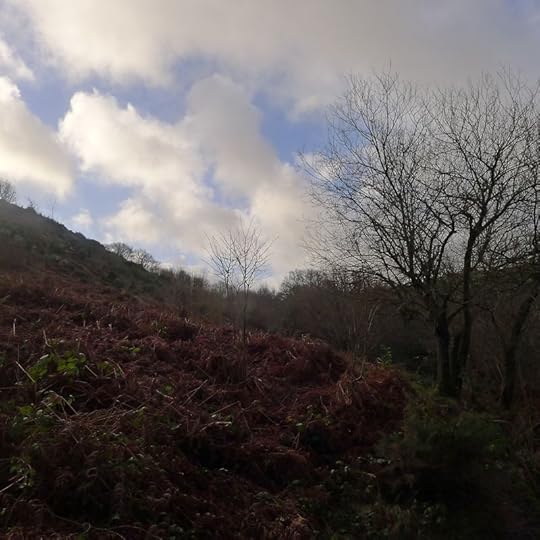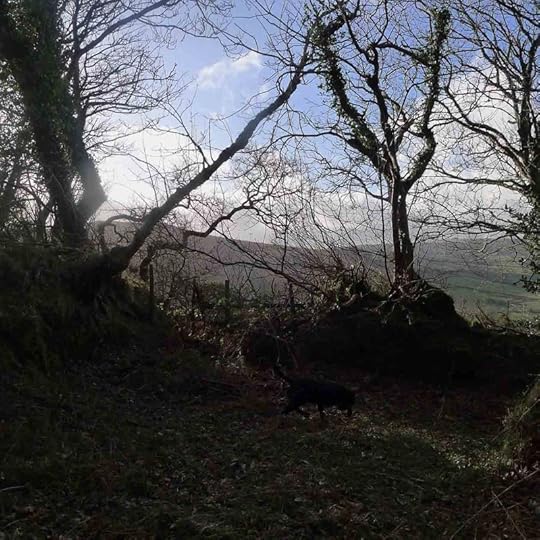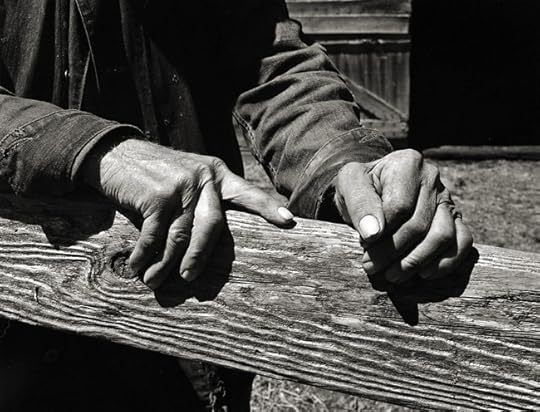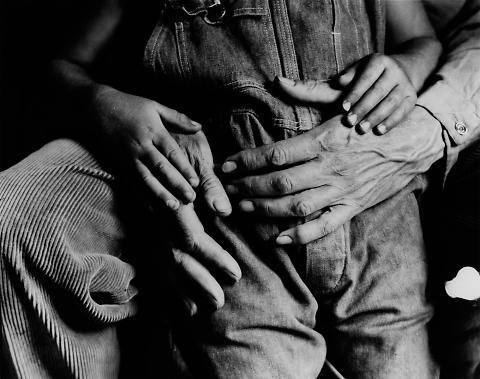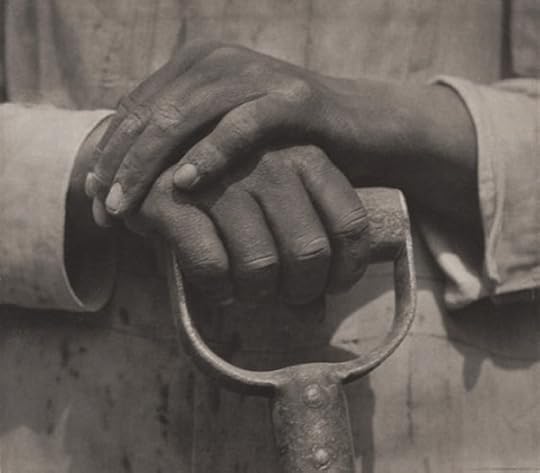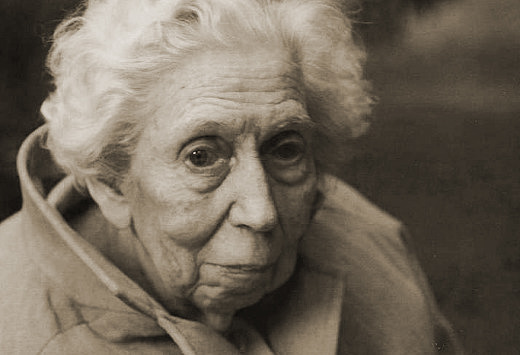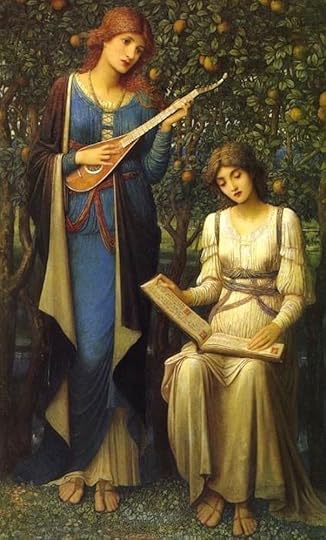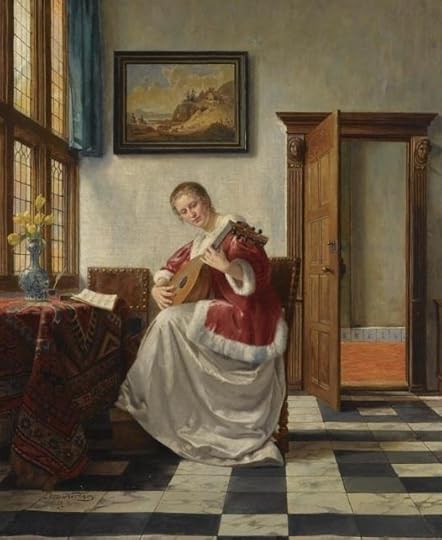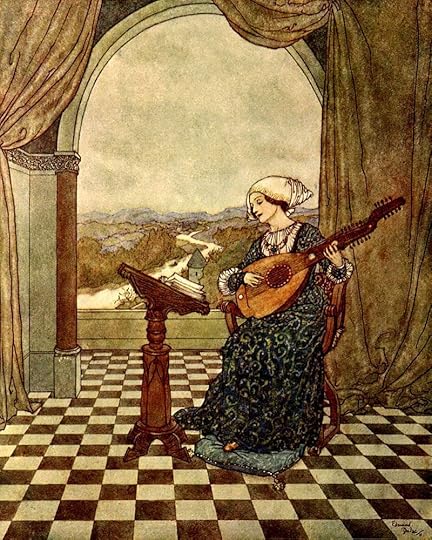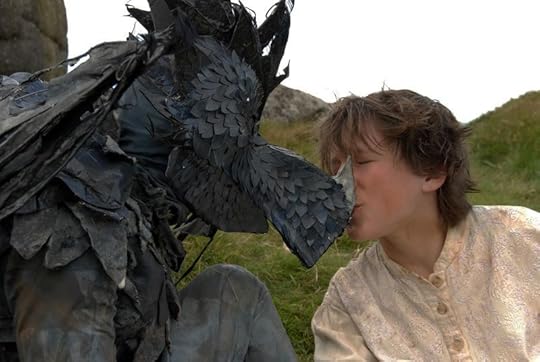Terri Windling's Blog, page 198
February 26, 2013
As if by magic
As dawn breaks over the village, Tilly and I follow the path to a neighbor's field, where we find a herd of wild
ponies who have strayed down from the moor.
We know this particular herd, which often grazes on the village Commons
(where I can see them from my studio windows as I work), but Tilly and I
are both surprised to find them here, shaggy little phantoms in the misty morning light.
As we cross the field, Tilly is curious but well
trained. She keeps her distance, and they pay her no mind. As for me, they are gentle, affable, and
patient as I walk among, camera in hand.
When I first lived in the village, on Lower Street, I would sometimes hear the unshod hooves of wild ponies clattering down the street below my bedroom window late at night...
...like fairy horses riding through the dark. And that's how I think of them still: fairy horses. Appearing and disappearing as if by magic.
February 25, 2013
We are storied folk
"I write to tell stories," says Finnish author Eppu Nuotio. "I believe that there are some professions in the world that will last forever: doctor or nurse, teacher, builder, and storyteller. I write also to become myself, more so day by day. Writing
is a way to shape the visible and invisible, in myself as well as in the
world."
Here on Nattadon Hill, dawn shapes the visible and invisible...
telling stories of light and shadow...
while at the edge of a field, a small black dog listens intently. (Look close, and you will see her.)
Tilly translates the land's stories for me. She is a trickster, a boundary crosser, moving between the human world and the numinous landscape, its language formed of light, rain, scent, and time.
"Love and translation look alike in their grammar," says Argentinian writer Andrés
Neuman. "To love someone implies transforming their words into ours.
Making an effort to understand the other person and, inevitably, to
misinterpret them. To construct a precarious language together."
Each morning, Tilly and I walk the land and construct a language, a story, all our own.
"We
are storied folk. Stories are what we are; telling and listening to stories
is what we do." -
Arthur Kleinman
February 24, 2013
Tunes for a Monday Morning
Since we've been talking about work and labor of the hands, I've chosen a trio of Gaelic waulking songs this week, all recorded in Scotland for the Highland Sessions. Waulking songs were sung as part of the traditional process of "waulking" homespun cloth (particularly tweeds): beating it against a board or trampling it underfoot to soften it. This task was often done by groups of women together, and the songs drove the work with their beat.
In the video above, Margaret Stewart sings "He Will Go, He Will Go With Me." Below, Kathleen MacInnes sings "Gaol Ise Gaol (She's My Love)." The second song starts about 30 seconds into the video.
And last:
Karen Matheson (of Capercaille) sings a very beautiful waulking song from Skye: "Chuir m'Athair Mise Dha'n Taigh Charraideach (My
Father Sent Me to the House of Sorrow)."
February 23, 2013
Since we've been talking about work and labor of the ha...
Since we've been talking about work and labor of the hands, I've chosen a trio of Gaelic waulking songs this week, all recorded in Scotland for the Highland Sessions. Waulking songs were sung as part of the traditional process of "waulking" homespun cloth (particularly tweeds): beating it against a board or trampling it underfoot to soften it. This task was often done by a group of women together, and the songs drove the work with their beat.
In the video above, the lead waulk singer is Kathleen MacInnes. Below, it is Margaret Stewart.
And last:
Karen Matheson (of Capercaille) sings a waulking song from Skye: "Chuir m'Athair Mise Dha'n Taigh Charraideach (My
Father Sent Me to the House of Sorrow)."
What Work Is
Looking at My Hands
“A hand turned upward holds only a single, transparent question.”
--Jane Hirshfield, “A Hand”
These peasant hands, shovel size, cracked knuckles,
holds no transparencies. The age between
creases, packed thick as gardener’s dirt,
would tell you I work the fields or send shuttles
across large looms. It says I shuck corn, bait lines,
hack tree limbs, knot ropes. It says I force
myself into a cow haul out a calf, slick
with mucus and blood.
They lie. I do no hard work
but tap endlessly with four fingers on a keyboard
like some erratic god, bringing a semblance of life
into my increasingly populated world.
© 2013 Jane Yolen, all rights reserved.
From "Labor Pains: The Loneliness of the Working Class Writer," by Valerie
Miner:
"Every day I wonder whether writing is a form of lunacy or of
betrayal. One of my parents didn't go past eight grade, the other didn't
finish high school. There were no books in our house, no symphonies on
the Victrola, no high drama except at the dinner table. One brother grew
up to be a carpenter, the other works for a maritime union. I've always
carried the suspicion that laboring with words is not real work. I ask
myself: Does writing mean anything? Do I have the right to feel tired at
the week's end? Shouldn't I be doing something useful?"
From "What Work Is" by Philip Levine :
We stand in the rain in a long line
waiting at Ford Highland Park. For work.
You know what work is—if you’re
old enough to read this you know what
work is, although you may not do it.
Forget you. This is about waiting,
shifting from one foot to another.
Feeling the light rain falling like mist
into your hair, blurring your vision
until you think you see your own brother
ahead of you, maybe ten places.
You rub your glasses with your fingers,
and of course it’s someone else’s brother,
narrower across the shoulders than
yours but with the same sad slouch, the grin
that does not hide the stubbornness,
the sad refusal to give in to
rain, to the hours of wasted waiting,
to the knowledge that somewhere ahead
a man is waiting who will say, “No,
we’re not hiring today,” for any
reason he wants.
(Read the full poem here.)
I've kept a torn, creased, yellowing copy of Valerie Miner's article "Labor Pains" ever since I first clipped it out of The Village Voice in the 1980s. Back then, it felt sharply, almost painfully relevant to me, as a woman from a blue-collar background who had crossed a line (invisible, little-discussed, but distinct) in entering the white-collar world of New York's book publishing industry. As the daughter of a truck driver, whose brothers all worked with their hands, it seemed, in those days, both miraculous and strange that someone was willing to pay me to read and write books. Thirty years later, my firm belief is that storytelling in all its
artistic forms is useful work indeed, soul-sustaining and necessary
for art makers and partakers alike. And yet the questions raised by
the poems, quotes, and photographs here still linger....
Your thoughts?

The images above: Two photographs of Georgia O'Keefe's hands by Alfred Steiglitz (1864-1946), "Hands Washing" by Tina Modatti (1896-1942), "Wright Morris' Hands" and "Maynard & Dan Dixon's Hands" by Dorothea Lange (1895-1965), and "The Puppeteers Hands" by Tina Modotti. (I particularly love the last one because my husband is a puppeteer.)
February 21, 2013
The magic you can hold in your hands....
“To me, all creativity is magic.
Ideas start out in the empty void of your head - and they end up as a
material thing, like a book you can hold in your hand. That is the
magical process. It's an alchemical thing. Yes, we do get the gold
out of it but that's not the most important thing. It's the work
itself.” ― Alan Moore
“It's not my brain that's writing the
book, it's these hands of mine.” ― Madeleine L'Engle
When I fall asleep
my hands leave me.
They pick up pens
and draw creatures
with five feathers
on each wing.
- Siv Cedering (from "Hands")
With these hands I have held
a bird with a broken wing.
With these hands I have touched
my children in the sun.
With these hands I have made
a house of living earth.
With these hands I have worked
a field of growing corn.
With these hands I have learned to kill
As much as I have learned to live.
These hands are the tools of my spirit.
These hands are the warriors of my anger.
These hands are the limitations of my self.
These hands grow old and feel
unfamiliar walls
As they reach out to find
the world I used to know.
- Nancy Wood (from Many Winters: Prose and Poetry of the Pueblos)
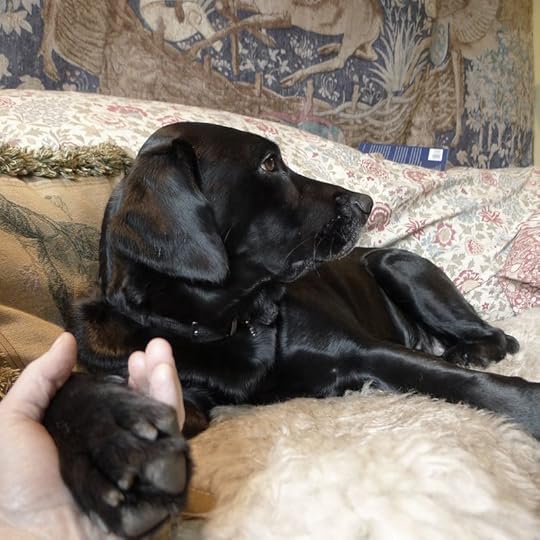 Images above, photographs of hands by three great American photographers: "Worker's Hands" by Edward Weston (1886-1958), "Georgia O'Keefe: Hands and Skull" by Alfred Steiglitz (184-1946), "Crofter's Hands" by Paul Strand (1980-1976). Also, me and Tilly: "Hand and Paw."
Images above, photographs of hands by three great American photographers: "Worker's Hands" by Edward Weston (1886-1958), "Georgia O'Keefe: Hands and Skull" by Alfred Steiglitz (184-1946), "Crofter's Hands" by Paul Strand (1980-1976). Also, me and Tilly: "Hand and Paw."
February 20, 2013
The wizardry of words
From One Writer's Beginnings and On Writing by Eudora Welty:
“I live in gratitude to my parents for initiating me--and as early as I
begged for it, without keeping me waiting--into knowledge of the word,
into reading and spelling, by way of the alphabet. They taught it to me at home in time for me to begin to read before starting school. My
love for the alphabet, 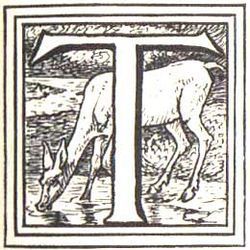 which endures, grew out of reciting it but,
which endures, grew out of reciting it but,
before that, out of seeing the letters on the page. In my own story
books, before I could read them for myself I fell in love with various
winding, enchanted-looking initials drawn by Walter Crane at the head of
fairy tales. In 'Once upon a time,' an 'o' had a rabbit running it as a
treadmill, his feet upon flowers. When the day came years later for me
to see the Book of Kells, all the wizardry of letter, initial, and word
swept over me a thousand times, and the illumination, the gold, seemed a
part of the world's beauty and holiness that had been there from the
start.”
“It had been startling and
disappointing to me to find out that story books had been written by
people, that books were not natural wonders, coming up of themselves
like grass. Yet regardless of where they come from, I cannot remember
a time when I was not in love with them -- with the books themselves,
cover and binding and the paper they were printed on, with their
smell and their weight and with their possession in my arms, captured
and carried off to myself. Still illiterate, I was ready for them,
committed to all the reading I could give them.”
“I read library books as fast as I could go, rushing them home in
the basket of my bicycle. From the minute I reached our house, I started
to read. Every book I seized on, from Bunny Brown and His Sister Sue
at Camp Rest-a-While to Twenty Thousand Leagues Under the Sea, stood
for the devouring wish to read being instantly granted. I knew this was
bliss, knew it at the time. Taste isn’t nearly so important; it comes in
its own time.”
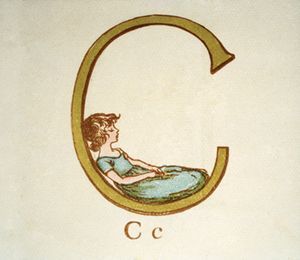 “Long before I wrote stories, I
“Long before I wrote stories, I
listened for stories. Listening for them is something more acute than
listening to them. I suppose it’s an early form of participation in
what goes on. Listening children know stories are there. When their
elders sit and begin, children are just waiting and hoping for one to
come out, like a mouse from its hole.”
"Children, like animals use all their senses to discover the
world. Then artists come along and discover it the same way.... Or now
and then we'll hear from an artist who's never lost it.”
 "We do need to bring to our writing, over and over again, all the
"We do need to bring to our writing, over and over again, all the
abundance we possess. To be able, to be ready, to enter into the minds
and hearts of our own people, all of them, to comprehend them (us) and
then to make characters and plots in stories that in honesty and with
honesty reveal them (ourselves) to us, in whatever situation we live
through in our own times: this is the continuing job, and it's no harder
now than it ever was, I suppose. Every writer, like everybody else,
thinks he's living through the crisis of the ages.
"To write honestly and
with all our powers is the least we can do, and the most.”
Images above: A page from the Book of Kells (ca. 800), An Absurd ABC by Walter Crane (1845-1915), a decorative letter by Walter Crane (from the fairy tale Brother & Sister), two illustrations from A is for Apples by Kate Greenaway (1846-1901), letters designed by William Morris (1834-1896), and photographs of Eudora Welty (1909-2001) in youth and age.
And don't forget to sample the latest dishes in the Moveable Feasts, links to which can be found on the second page of comments for this post.
February 19, 2013
Some things I am thinking about today....
"All through our gliding journey, on this day as on so many others, a little song runs through my mind. I say song because it passes musically, but it is really just words, a thought that is neither strange nor complex. In fact, how strange it would be not to think it -- not to have such music inside one's head and body, on such an afternoon. What does it mean, say the words, that the earth is so beautiful? And what shall I do about it? What is the gift I should bring to the world? What is the life I should live?" - Mary Oliver (from "Flow," Long Life)
When will you have a little pity for
every soft thing
that walks through the world,
yourself included?
- Mary Oliver (from "Pen and Paper and a Breath of Air," Blue Pastures)
You do not have to be good.
You do not have to walk on your knees
for a hundred miles through the desert repenting.
You only have to let the soft animal of your body
love what it loves.
- Mary Oliver (from "Wild Geese," Dream Work)
February 18, 2013
Where words fail
Recent posts have reflected on silence, language, words, and storytelling. Now this:
"Where words fail, music speaks.” - Hans Christian Andersen
"When you really listen to music, you begin to hear the beautiful way it
constellates and textures the silence, how it brings out the hidden
mystery of silence. The gentle membrane where sound meets silence
becomes deftly audible." - John O'Donahue (Anam Cara)
“She knew this music--knew it down to the very core of her being--but
she had never heard it before. Unfamiliar, it had still always been
there inside her, waiting to be woken. It grew from the core of mystery
that gives a secret its special delight, religion its awe. It demanded
to be accepted by simple faith, not dissected or questioned, and at the
same time, it begged to be doubted and probed.”
- Charles de Lint (The Little Country)
"We do not create
music; we only create the conditions so that she can appear." - Romanian conductor Sergiu Celibidache
"The music of a people offers a unique entry into their unconscious life. The tenor of what haunts and delights them becomes audible there. The cry of a people is in their music. The mystery of music is its uncanny ability to coax harmony out of contradiction and chaos. Often the beauty of great music is a beauty born from the rasp of chaos. The confidence of creativity knows that deep conflict often yields the most interesting harmony and order. In the Irish tradition, we have sean-nós singing. This is a style of unaccompanied singing in the Irish language that has a primal tonality and a very beautiful rhythm. The resonance and style of sean-nós seems to mirror the landscape and sensibility of the people. There is a repetoire of these songs and they are sung over and over." - John O'Donahue (Beauty: The Invisible Embrace)
"The rivers are still singing in Sami, so we have not given up. Nor has the land." - Sami yoik singer and activist Sofia Jannok (from her TED Talk, "Our Rights to Earth and Freedom")
"In the presence of great music we have no alternative but to live nobly." - Sean O'Faolain
“If you cannot teach me to fly, teach me to sing." - J.M Barrie ( Peter Pan )
 Art above: "When Apples Were Golden" by John Melhuish Strudwick (1849-1937), "Musica" by Kate Elizabeth Bunce (1856-1927), Playing the Lute by Otto Karl Kirberg (1850-1926), "The Wind's Tale" by Edmund Dulac (1882-1953), "A Fairy Song" by Arthur Rackham (1867-1939).
Art above: "When Apples Were Golden" by John Melhuish Strudwick (1849-1937), "Musica" by Kate Elizabeth Bunce (1856-1927), Playing the Lute by Otto Karl Kirberg (1850-1926), "The Wind's Tale" by Edmund Dulac (1882-1953), "A Fairy Song" by Arthur Rackham (1867-1939).
The Desire for Dragons, 2
There have been many tasty new dishes added to our Moveable Feast in the last week. (The topic: "The Desire for Dragons: What Brings Us to Myth & Fantasy?")
Be sure to click on the "Show More Comments" link at the bottom of the Comments section for the latest offerings. There's also a full list of links (so far) on the Moveable Feast page.
And please note that the Feast is still open to anyone who wants to bring a new dish to the table....
Images above: The Laidley Worm (or dragon) on Meldon Hill, and the prince kisses the dragon. These photographs, taken by Brian Skilton, are from the 2009 film shoot of The Laidley Worm of Spindleston Heugh, a fairy tale film from The Chagford Filmmaking Group. (Our daughter Victoria played the dragon.)
Terri Windling's Blog
- Terri Windling's profile
- 707 followers












